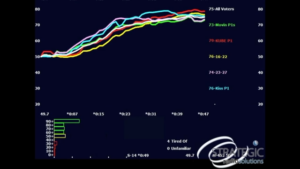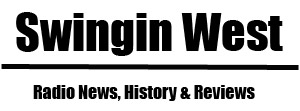In today’s fast-paced digital landscape, where media consumption is constantly evolving, radio remains a steadfast and influential medium. With the advent of Portable People Meter (PPM) technology, the radio industry has witnessed a significant shift in audience measurement and engagement strategies. PPM radio, which harnesses the power of advanced audio recognition technology, has emerged as a game-changer, redefining the way broadcasters and advertisers understand their audiences. In this article, we will explore the concept of PPM radio and delve into its immense significance within the radio industry.

For decades, radio broadcasters relied on traditional methods like diaries and surveys to gauge audience behavior and preferences. However, these methods often suffered from inaccuracies, recall biases, and limited sample sizes. The introduction of PPM technology has revolutionized audience measurement, providing a more precise and comprehensive understanding of listener habits.
What Is a PPM Radio?
PPM radio is based on the use of small electronic devices called Portable People Meters. These meters are designed to be worn or carried by radio listeners, allowing for the capture and recording of their exposure to radio broadcasts. Equipped with advanced audio recognition technology, PPM meters can identify specific radio signals and accurately record listener behavior, such as tuning into a particular station or program and the duration of their listening sessions.
The significance of PPM radio lies in its ability to provide broadcasters and advertisers with invaluable insights into audience preferences, habits, and engagement levels. Unlike the subjective nature of self-reported diaries or surveys, PPM technology captures real-time data, offering a more objective and accurate representation of listener behavior. This data-driven approach allows broadcasters to make informed decisions regarding programming, content selection, and advertising strategies.
By analyzing the aggregated data collected from PPM devices, broadcasters gain a deep understanding of their audience demographics, listening patterns, and the popularity of specific shows or time slots. Armed with this knowledge, they can tailor their programming to cater to the preferences of their target audience, leading to increased listener satisfaction and loyalty.
A Short History of PPM Radio
The history of PPM radio can be traced back to the late 20th century when the radio industry faced challenges in accurately measuring audience engagement and preferences. Traditional methods like diaries and surveys relied on self-reporting, which often resulted in incomplete or biased data. As technology advanced, there arose a need for a more accurate and reliable system of audience measurement.
In the early 2000s, the concept of Portable People Meters (PPMs) emerged as a potential solution. The idea was to create small electronic devices that listeners could wear or carry, capable of automatically capturing their exposure to radio broadcasts. These devices would employ advanced audio recognition technology to detect and record specific radio signals.
The development and implementation of PPM technology faced various challenges and required extensive research and innovation. Audio recognition algorithms were refined to accurately identify radio signals, distinguishing between different stations and programs. The devices themselves underwent improvements to ensure portability, durability, and user-friendliness.
The first large-scale implementation of PPM radio occurred in the early 2000s in the United States. Companies such as Arbitron (now Nielsen Audio) and Edison Research played instrumental roles in pioneering the use of PPM devices for audience measurement. The initial deployments allowed broadcasters and advertisers to gather real-time data on listener behavior, enabling them to make data-driven decisions and optimize their strategies.
Over time, PPM technology continued to evolve, benefiting from advancements in audio recognition algorithms, miniaturization of hardware, and improved battery life. These enhancements increased the accuracy and efficiency of audience measurement, providing broadcasters and advertisers with more precise insights into listener habits and preferences.
PPM radio gradually gained traction globally, with other countries adopting the technology for audience measurement. As the radio industry adapted to the digital age, PPM radio became a valuable tool for broadcasters and advertisers to understand their audiences and tailor their content and campaigns accordingly.
Today, PPM radio is an established and essential part of the radio industry. It has transformed audience measurement, replacing traditional diary-based systems with a data-driven approach that captures actual listener behavior. The ongoing advancements in PPM technology continue to refine the accuracy, granularity, and real-time nature of audience measurement, shaping the future of radio broadcasting.
Explaining PPM Technology
The functionality of PPM devices is rooted in advanced audio recognition technology. When a listener wears a PPM device, it continuously monitors the surrounding audio environment, specifically focusing on radio signals. By employing complex algorithms, the PPM device can detect and identify specific radio signals, determining the station and program being listened to by the wearer.

The PPM device captures and records various data points related to listener behavior. This includes information such as the time and duration of radio exposure, the specific stations and programs tuned into, and even the volume levels at which the radio is being listened to. These data points create a detailed profile of listener engagement and preferences.
To ensure accuracy, PPM technology has witnessed significant advancements in audio recognition. These developments have contributed to the ability of PPM devices to precisely identify and differentiate between radio signals, even in challenging environments with overlapping frequencies or background noise. The technology has evolved to a point where it can accurately determine not only the station being listened to but also the specific program within that station’s lineup.
The incorporation of advanced audio recognition technology in PPM devices has revolutionized audience measurement in the radio industry. It allows for granular and reliable data collection, providing broadcasters and advertisers with an in-depth understanding of listener behavior. The precision offered by PPM technology ensures that the measurement is not only accurate but also reflective of real-time engagement, enabling broadcasters to make informed decisions regarding content, programming, and advertising strategies.
Video: Diary and PPM radio ratings explained
PPMs Impact on Audience Measurement
The Portable People Meters employ advanced audio recognition technology, enabling them to identify specific radio signals and gather data on listener behavior, including which stations they tune into and the duration of their listening sessions. This data is then aggregated and analyzed to provide accurate and real-time audience measurement metrics.
PPM technology serves as a significant upgrade from the traditional diary-based audience measurement system, offering a more accurate and reliable method. By directly capturing actual listener behavior, PPM radio provides broadcasters and advertisers with invaluable insights into audience preferences, listening habits, and engagement levels. This data-driven approach allows for precise audience segmentation, empowering broadcasters to customize their content and programming to cater to specific demographics. The result is an enhanced listening experience that resonates with audiences on a deeper level.
Moreover, the real-time nature of PPM radio data enables broadcasters to promptly adapt their strategies based on audience feedback, ensuring they stay attuned to changing preferences and trends. This agility in content creation and delivery leads to a more dynamic and engaging radio landscape, where broadcasters can continuously fine-tune their offerings to meet the evolving needs of their listeners. Overall, PPM radio’s precise audience measurement capabilities play a crucial role in elevating the quality and relevance of radio programming.
The PPM Radio Criticism
PPM radio, like any technology, has faced criticism and scrutiny, prompting discussions about its limitations and potential drawbacks. While PPM radio offers numerous benefits to the radio industry, it is important to acknowledge the following criticisms:
- Sample Bias and Representation: One criticism of PPM radio revolves around sample bias and the representation of diverse audiences. Critics argue that the wearable PPM devices may not be equally accessible or appealing to all demographics, potentially skewing the data towards certain segments of the population. This bias can result in an incomplete understanding of audience behavior and preferences, particularly for underrepresented groups or niche markets.
- Incomplete Listening Context: PPM devices primarily focus on capturing radio signals and listener exposure without providing context about the listening environment. Critics argue that this lack of contextual information, such as the listener’s activities or mood, may limit the depth of understanding regarding audience engagement. For instance, a listener may have a radio station on in the background without actively paying attention, leading to potentially inaccurate measurements of true interest or preferences.
- Privacy Concerns: The use of PPM devices raises privacy concerns among some individuals. As these devices continuously capture and record listener behavior, there may be apprehension about the storage and usage of personal data. Critics express concerns about potential breaches of privacy or the misuse of sensitive information collected by PPM devices, highlighting the need for transparent data handling and consent practices.
- Measurement Limitations: While PPM technology provides real-time data and accurate audience measurement in many aspects, some critics argue that certain listening scenarios or behaviors may not be adequately captured. For example, situations where radio broadcasts are accessed through non-traditional means like online streaming or smart speakers may not be accurately accounted for by PPM devices designed primarily for over-the-air radio signals.
- Cost and Implementation Challenges: PPM radio systems can involve significant costs for broadcasters and advertisers, including the investment in PPM devices, data processing, and analysis. Critics argue that these costs may be prohibitive for smaller radio stations or organizations with limited resources. Additionally, the successful implementation of PPM technology requires cooperation and participation from broadcasters, advertisers, and listeners, which can pose challenges in achieving widespread adoption and accurate data representation.
It is essential to consider these criticisms constructively, as they can drive improvements in PPM technology and address concerns surrounding its usage. Ongoing research, advancements in data analysis techniques, and transparency in data handling practices can help mitigate these criticisms, ensuring that PPM radio continues to evolve as a reliable and valuable tool for audience measurement and engagement in the radio industry.
